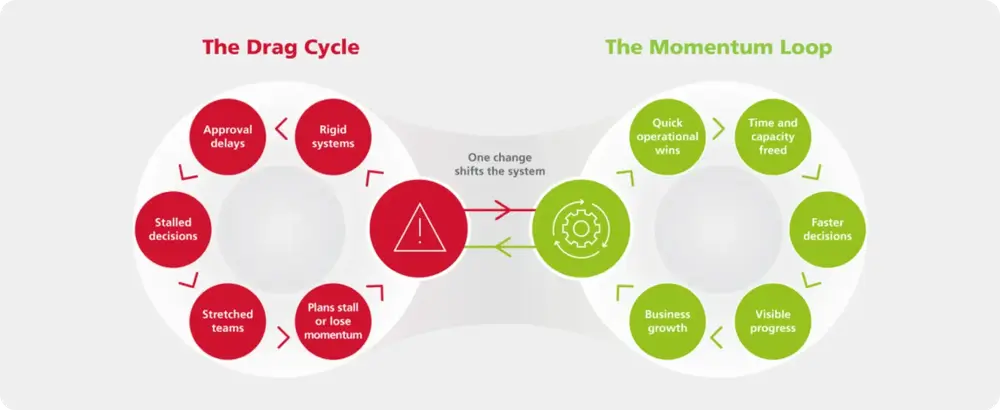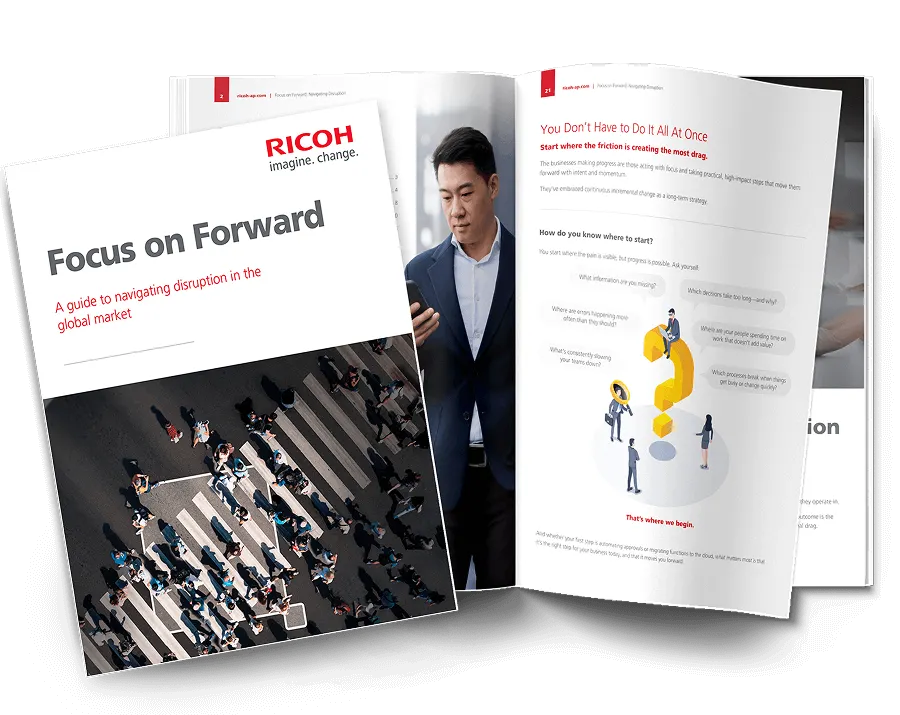For business leaders across Asia Pacific, disruption no longer feels like a temporary hurdle.
Major disruptive events—be they economic, geopolitical, or technological—used to be spaced far enough apart that it was a sound business strategy to respond reactively. You could weather the storm, regroup, and then move on.
But now these challenges don’t strike in isolated events. They’re happening all at once, and with increasing regularity.
From fluctuating tariffs and foreign exchange swings to labour shortages and supply chain strain, companies are under constant pressure to respond to the unpredictable.
The message we're hearing across the region is clear: disruption has reshaped the environment APAC businesses operate in. Many leaders feel cornered into hesitation because the time, focus, and resources required to act strategically are consumed by the daily reality of simply keeping their businesses running.
What’s Driving Disruption in APAC?

For many organisations, these pressures have led to a defensive posture, where investment decisions are delayed and strategic ambition is overtaken by operational survival.
The result: 'drag'. A prolonged, grinding sense of reduced momentum that impacts every corner of the business.

The Symptoms Are Familiar: A Growing Strain on Operational Efficiency

- Businesses are experiencing slower receivables and watching margins erode under increased pricing pressure
- Sales cycles are stretching longer, with customers demanding more clarity before making buying decisions
- Teams are overloaded, preventing them from experimenting with new tools or ways of working
- Technology debt adds hidden weight to daily operations, making it harder to adapt or respond quickly.
Disruption is universal, but its impact is uneven.
- Small and midsize businesses are feeling the pressure most acutely, often lacking the internal capacity to absorb risk or delay.
- Large enterprises, on the other hand, are dealing with complexity. The sheer challenge of coordinating change across departments and geographies means taking action is often delayed.
What should be a roadmap for progress ends up gridlocked by complexity. This is what disruption looks like in 2025: not a sudden crisis, but a slow, persistent grind that wears down momentum.
Why Many Businesses Feel Stuck in Their Digital Transformation

This inertia is felt across functions, and over time, it leads not only to missed opportunities but also eroded morale. Disruption despair becomes an internal mindset, not just a market condition.
From Fatigue to Focus: Reframing the Opportunity for Business Growth
Here’s the good news: organisations are pushing forward through these conditions. However, they’re not doing it with sweeping transformation initiatives. They’re doing it by focusing on friction. Instead of waiting for ideal conditions, they take small but meaningful steps to enable progress.
By simplifying workflows, streamlining decision-making, and clearing internal roadblocks, they’re reclaiming capacity and momentum.
That early momentum makes future changes easier to deliver, less disruptive, and more impactful. With each win, the organisation gains more clarity and capacity. And that shift from stalled to responsive is the foundation for sustainable business growth.
A Way Forward (Without Reinventing Everything)

Ricoh’s work with customers across the region shows that the most effective place to start is often with what you already have.
The way forward starts with identifying the low-effort, high-impact changes that unlock momentum without overwhelming your teams—whether it’s a broken workflow, an outdated approval process, or a siloed system.
The impact of even a single change can be significant. Reduced admin time, improved collaboration, and faster decision cycles free up teams to shift focus toward the next, more complex barrier to progress, one that often requires greater coordination, but delivers an even greater impact.
The Pressure is Real—But So is the Way Forward
The disruptions we're already facing don't look like they'll disappear anytime soon. And who knows what's around the corner?
As this article has explored, the conditions across APAC have changed, but so has the opportunity to respond with focus instead of being overwhelmed.
In our full guide, Focus on Forward: A Guide to Navigating Disruption, we go deeper into what this looks like: how leaders are building financial resilience, operational agility, and organisational visibility through real-world actions that match the complexity of today’s business environment.
Download the Guide:
Focus on Forward – A Guide to Navigating Disruption
Explore how businesses across APAC are turning pressure into progress with clear, focused action.
Download the full ebook here
Recommended resources for you

Disruption in APAC: The Operational Efficiency Risk
Explore how disruption is straining operational efficiency across APAC, and how forward-focused organisations are finding smart, scalable ways to build business growth.

The Small Team’s Guide to Automation: Simple Tools to Save Hours Every Week
Discover how small businesses are using no-code task automation to streamline daily work—no coding skills required. Learn practical tips and how to get started today.

No-Code, No Stress: How SMBs Boost Productivity with Simple Automation
Discover how small businesses are using no-code task automation to streamline daily work—no coding skills required. Learn practical tips and how to get started today.



